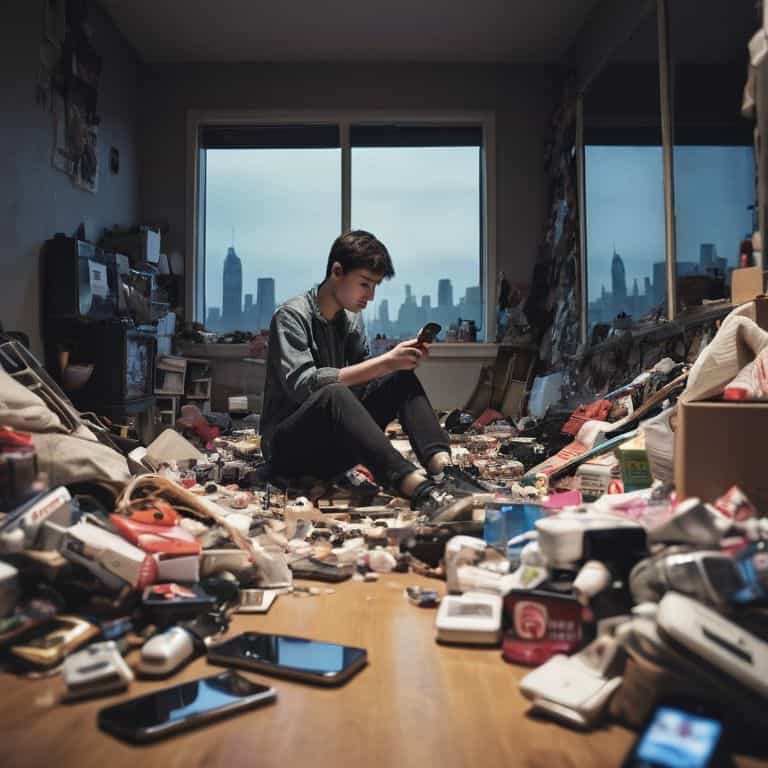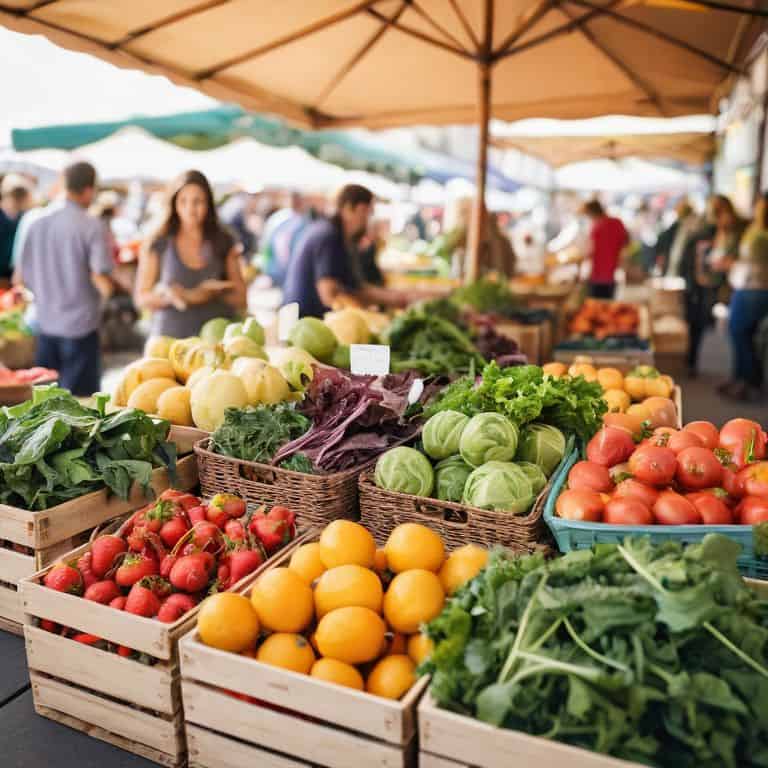I still remember the first time I stumbled upon the trend of de-influencing on TikTok – it was like a breath of fresh air in a sea of relentless consumerism. Everyone’s favorite influencers were suddenly telling us what not to buy, and I was obsessed with figuring out what was behind this phenomenon. As someone who’s spent years studying consumer culture, I’ve always been fascinated by the ways in which our desires and tastes are shaped by the cultural forces around us. But what really caught my attention was the way de-influencing seemed to be tapping into a deeper sense of disillusionment with the status quo.
As I delve into the world of de-influencing, I want to make one thing clear: I’m not here to peddle fluffy marketing speak or bland advice. My goal is to give you the real story behind this trend, to help you understand the cultural forces that are driving it. I believe that the trend of de-influencing is more than just a fleeting phenomenon – it’s a subversive movement that’s challenging our assumptions about consumption and identity. In this article, I’ll be sharing my insights and observations, gained from years of studying consumer culture and tracking the latest trends. I’ll cut through the hype and get to the heart of what’s really going on, and I promise to give you a no-nonsense guide to navigating the complex world of de-influencing.
Table of Contents
De Influencing Trend Uncovered

As I delve into the world of de-influencing, I’m struck by the sustainable fashion trends that are emerging as a result. It’s no longer about buying the latest designer piece, but about investing in timeless, quality items that won’t end up in a landfill. This shift towards minimalism is not only beneficial for the environment, but also has numerous minimalist lifestyle benefits, from reducing decision fatigue to promoting a sense of clarity and focus.
The de-influencing movement is also prompting people to reevaluate their relationship with social media, with many opting for social media detox methods to break free from the constant stream of consumerist messages. By taking a step back, individuals can begin to see the impact of consumerism on the environment and make more informed choices about their purchasing habits. This, in turn, is leading to a desire for more authentic online personas, where individuals prioritize transparency and honesty over curated perfection.
As I continue to explore this phenomenon, I’m fascinated by the influencer marketing ethics at play. Are influencers truly embracing the de-influencing movement, or is it just a clever marketing ploy? Regardless, one thing is clear: the de-influencing trend is forcing us to confront the consumerism impact on environment and our own role within it. By embracing this shift, we can work towards creating a more sustainable, mindful approach to consumption.
Social Media Detox Benefits
As I delve into the world of de-influencing, I’ve noticed a fascinating correlation between this trend and the desire for a digital detox. It’s as if the constant stream of curated content has led to a sense of fatigue, prompting individuals to reevaluate their online presence. By embracing de-influencing, people are not only rejecting the notion of relentless consumption but also seeking a more balanced relationship with social media.
The benefits of this mindful approach to social media are numerous, from reduced screen time to a decrease in comparative anxiety. By taking a step back from the virtual world, individuals can focus on their own values and desires, rather than being influenced by the opinions of others. This shift in perspective allows for a more authentic online experience, one that is driven by personal growth and self-awareness.
Sustainable Fashion Revival
As I delve into the world of de-influencing, I notice a fascinating overlap with the sustainable fashion movement. It’s as if consumers are finally waking up to the harsh realities of fast fashion and its devastating environmental impact. This shift in mindset is not just about being eco-friendly, but also about being mindful of one’s purchasing power.
The de-influencing trend is giving rise to a circular economy, where people are opting for second-hand clothing, swapping, or even renting outfits for special occasions. This approach is not only reducing waste but also promoting a more thoughtful and intentional approach to fashion consumption.
Beyond the Trend of De Influencing

As I delve deeper into the world of de-influencing, I’ve started to notice a fascinating correlation between sustainable fashion trends and the rise of minimalist lifestyles. It’s as if people are finally waking up to the fact that less is more, and that the constant barrage of consumerist messaging is not only bad for the planet, but also for our own sense of self. I’ve been exploring the city, camera in hand, capturing the authentic online personas that are emerging in the wake of this shift.
One of the most interesting aspects of this movement is the way it’s forcing us to re-examine our relationship with social media. By embracing social media detox methods, people are finding that they have more time and energy to focus on what really matters to them. This, in turn, is leading to a more nuanced understanding of consumerism impact on environment, and a growing desire to make more conscious choices about the products we buy and the brands we support.
As someone who’s spent years studying the influencer marketing ethics landscape, it’s heartening to see a new wave of creators emerge who are prioritizing transparency and honesty over slick production values and #sponcon deals. By stripping away the artifice and getting real about their lives and values, these individuals are helping to create a more authentic online culture – one that values substance over style, and depth over drama.
Consumerism Impact Reveal
As I delve into the world of de-influencing, I notice a significant shift in the way people perceive consumerism. It’s no longer about mindless buying, but rather about being mindful of the impact our purchases have on the environment and society. The de-influencing trend is revealing a more conscious approach to consumption, where individuals are taking the time to evaluate their needs and desires.
This newfound awareness is leading to a reduction in waste and a more thoughtful approach to buying. By saying no to unnecessary purchases, people are sending a message to companies that they value sustainability and responsible production practices. As a result, consumers are driving change and pushing companies to adapt to a more eco-friendly and socially responsible business model.
Minimalist Lifestyle Authenticity
As I delve into the world of de-influencing, I notice a fascinating overlap with the minimalist lifestyle movement. It’s as if people are craving a sense of authenticity and simplicity in their lives, and de-influencing is the natural next step. By rejecting the constant stream of consumerist messages, individuals are able to focus on what truly adds value to their lives.
The emotional connection we form with our belongings is a crucial aspect of this shift. When we surround ourselves with only what brings us joy or serves a purpose, we begin to appreciate the beauty of simplicity and intentionality. This, in turn, allows us to live more mindfully and make more conscious choices about the products we support and the influences we allow into our lives.
Breaking Free: 5 Key Takeaways to Ride the De-Influencing Wave
- Stop the Scroll: Be mindful of your social media consumption and take regular breaks to reduce the influence of consumerist content
- Buy Less, Buy Better: Invest in high-quality, sustainable products that align with your values, rather than constantly purchasing cheap, trendy items
- Unfollow the Noise: Curate your social media feeds to follow accounts that promote positivity, sustainability, and authenticity, and unfollow those that encourage mindless consumption
- Define Your Own Style: Don’t be swayed by influencer trends – instead, develop your own personal style and make purchases that reflect your unique tastes and values
- Support the Movement: Engage with brands and influencers that prioritize transparency, sustainability, and social responsibility, and use your purchasing power to drive positive change
Decoding De-Influencing: 3 Key Takeaways
De-influencing represents a seismic shift in consumer culture, where individuals are rejecting the relentless consumption narrative and embracing a more mindful approach to purchasing, with sustainable fashion and social media detox emerging as pivotal components of this movement
The authenticity of minimalist lifestyles is being reevaluated in the context of de-influencing, highlighting the tension between curated online personas and the genuine pursuit of simplicity, with implications for how we perceive and engage with influencer marketing
The de-influencing trend also underscores the profound impact of consumerism on our collective psyche and the environment, prompting a critical examination of the ‘why’ behind our consumption habits and the role of social media in shaping our desires, tastes, and values
Unpacking the Truth
De-influencing is more than just a rejection of consumerism – it’s a profound reevaluation of the role that stuff plays in our lives, and a testament to our growing desire for authenticity over aspiration.
Sloane Palmer
The De-Influencing Revolution: A New Era of Mindful Consumption

As I reflect on the trend of de-influencing, it’s clear that we’re witnessing a significant shift in the way we think about consumption. From the sustainable fashion revival to the benefits of a social media detox, it’s becoming increasingly apparent that people are craving a more authentic, minimalist approach to lifestyle. The de-influencing trend has also shed light on the impact of consumerism, revealing the often-hidden consequences of our purchasing decisions. By embracing this trend, we’re not only promoting a more mindful approach to consumption but also encouraging a more genuine connection with the world around us.
So, what’s the takeaway from this de-influencing revolution? For me, it’s about embracing a lifestyle that’s intentionally curated, one that prioritizes experience over material possessions and meaningful connections over mindless scrolling. As we move forward, I’m excited to see how this trend will continue to evolve, inspiring a new generation of consumers to think critically about their choices and cultivate a more thoughtful approach to living. By doing so, we can create a more sustainable, compassionate, and authentically beautiful world – one that’s driven by substance, not just style.
Frequently Asked Questions
How will the de-influencing trend impact the way brands market their products to younger generations?
As de-influencing gains traction, brands will need to shift from traditional advertising to more authentic, community-driven approaches. I predict a rise in user-generated content campaigns and strategic partnerships with micro-influencers who embody the values of younger generations, such as sustainability and transparency.
Can de-influencing really lead to a more sustainable approach to consumerism, or is it just a fleeting social media fad?
I’d argue that de-influencing has the potential to spark a more sustainable approach to consumerism, but it’s not a guarantee. When influencers ditch the constant consumerism narrative, it can encourage followers to rethink their buying habits and prioritize what truly adds value to their lives.
What role do influencers themselves play in perpetuating or challenging the de-influencing trend, and how will their business models need to adapt?
Influencers are now walking a tightrope – they must balance authenticity with monetization. To survive, they’ll need to pivot towards more nuanced, honest content, and perhaps even champion anti-consumerist values. It’s a risky move, but one that could ultimately lead to a more sustainable business model, and a renewed sense of trust with their audience.




